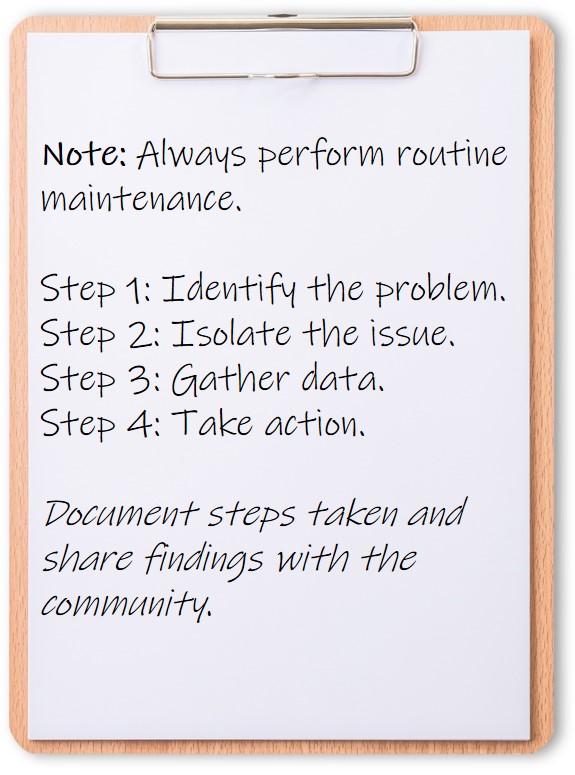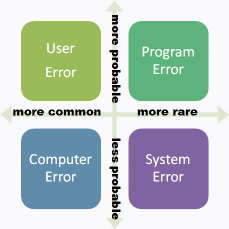6.2 Techniques
 Troubleshooting is a logical and systematic search for the source of a problem.
Troubleshooting is a logical and systematic search for the source of a problem.
Hint: Click the image to enlarge/shrink.
Following steps helps eliminate more common errors before beginning more complex investigations.
Work smarter, not harder!
This becomes even more critical when we consider there are many complex relationships between the user, the computer, the program, and the servers, AND multiple failures and causes are possible.
This page identifies three techniques, which may assist you before and during troubleshooting.
Technique 1: Maintenance
 Everything begins with maintenance. As a CHPS Focal Point, regular maintenance should include:
Everything begins with maintenance. As a CHPS Focal Point, regular maintenance should include:
- Reading release notes after each install to be familiar with software change.
- Ensuring no specific user has unneeded or illegal files.
- Removing obsolete or unnecessary files and obsolete entries from configuration files.
Technique 2: Communication Strategy
The second critical area is communications.
If more than one person in your office performs any of the regular maintenance listed above, create a plan to document changes made to the system.
Documenting system changes are also useful if you work alone. You might not always be able to recall your latest change when you are troubleshooting.
This type of preparation may significantly shorten the time spent troubleshooting and correcting errors.
 Technique 3: Work from Common to Rare Possibilities
Technique 3: Work from Common to Rare Possibilities
Once an issue has been identified and isolated, begin diagnosing the situation.
Start with the most probable and common issue, and progress to the least probable and uncommon issue.
Consider the chart on the left. You should generally move from left to right and then top to bottom when searching for errors (User, Program, Computer, and Server).

